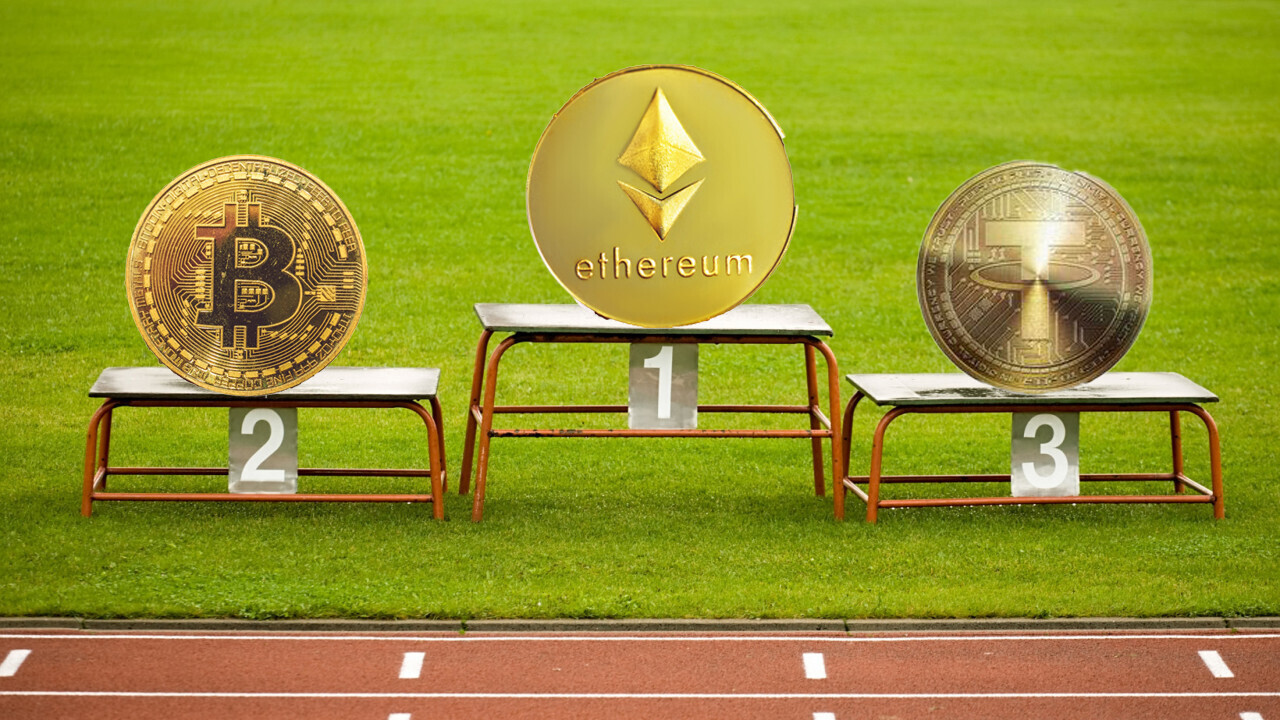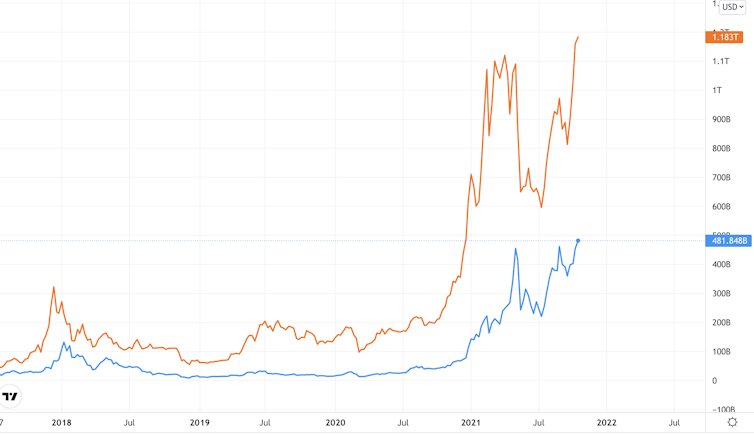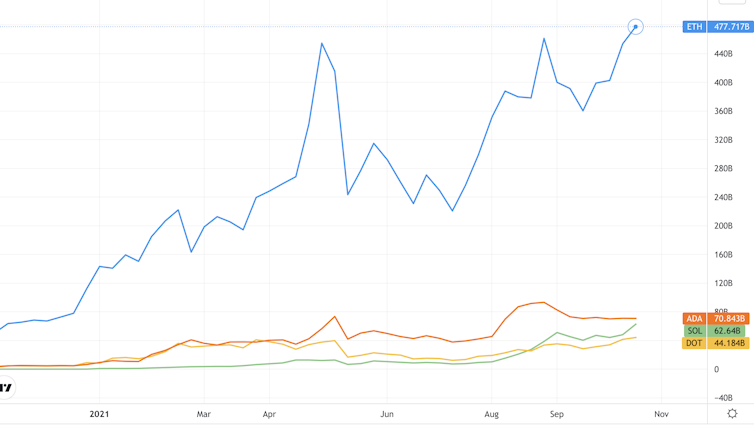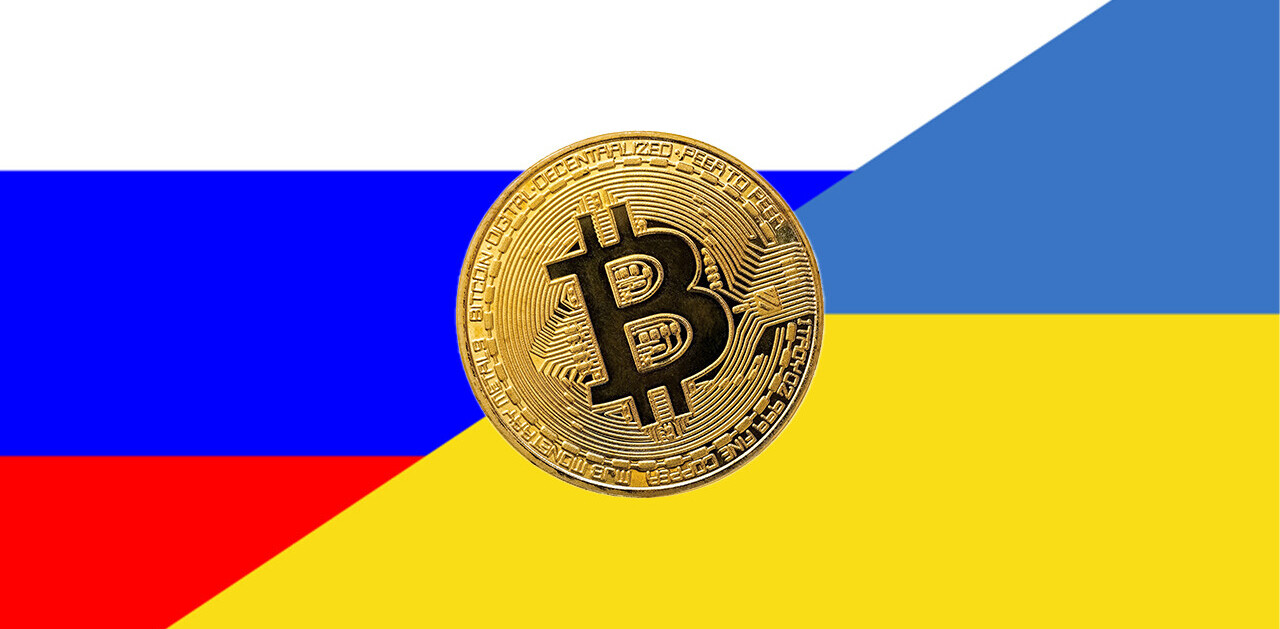
The world’s second most valuable cryptocurrency, ether, has been touching all-time highs in price ahead of a major upgrade of its underlying platform, ethereum. Ether is currently worth in aggregate just shy of US$500 billion (£363 billion). That’s still slightly less than half that of the biggest cryptocurrency, bitcoin.
But could this upgrade, a vital step towards a much greener and faster version of the current system, put ethereum on the path to becoming the dominant platform on the internet and make ether number one?
First of all, it’s important to understand the difference between bitcoin and ethereum. Bitcoin is a system for allowing people to send value between one another without the need for banks. It is built on a technology known as blockchains, which are online ledgers whose transactions are checked and recorded by a decentralized network of computers known as validators.
These validators are incentivized for their work by receiving newly minted bitcoin as rewards, in what is known as “mining”. To make this more attractive, bitcoin is relatively scarce: only around 18 million coins are in existence and the protocol is such that there can never be more than 21 million.
Ether vs bitcoin by total value (market cap)

Ether works in a similar way to bitcoin, but ethereum is different. It is a worldwide software platform with no host, on which developers are building thousands of blockchain-based applications.
This means these applications can all run without being controlled by a company. Examples include cryptocurrency exchanges, insurance systems, and new kinds of gaming.
At the heart of the platform is the idea of smart contracts, which are automated agreements that ensure that money and assets change hands when certain conditions have been fulfilled. All transactions on the platform ultimately use ether, and the success of the platform is why ether has been the second-largest cryptocurrency after bitcoin for the past few years. The fact that ether fuels the platform – even being referred to as gas fees – gives it a utility and an intrinsic value that bitcoin does not have.
Why ethereum 2.0
Ethereum has several major problems, however. The first is that gas fees have become very expensive in the last couple of years because the network has become so popular and is therefore very congested.
Validators prioritize users who are willing to pay the highest fees for their transactions. For example, the average transaction at the time of writing on crypto exchange Uniswap costs around US$44 in gas fees.
Bitcoin has comparable issues with congestion, which its developers are trying to solve by building applications like Lightning on top which boast faster transaction speeds.
The second problem for ethereum is that, as it has become more popular, the amount of computational power used by validators has rocketed. It’s the same problem that has brought a lot of negative publicity to bitcoin because it uses a lot of electricity.
Bitcoin is currently using as much power as the whole of the Philippines, although its supporters argue that much of this is power that would otherwise be wasted – for example, oil rigs burning off natural gas because it’s not profitable to sell it. Proponents also point out that the network is shifting towards using much more renewable power over time.
At any rate, the eventual creation of an ethereum 2.0 will solve these problems by moving the platform’s system of validation from “proof of work” to “proof of stake”. Without getting into too many details, proof of work is a protocol in which validators all attempt to solve complex equations to prove that each proposed transaction is valid. With proof of stake, there’s no need for all validators to do this power-hungry work, because the system chooses one at random to confirm each transaction.
Many in the bitcoin community are against proof of stake because it gives the most power to the biggest validators, potentially allowing them to corrupt the system of validation if they can get control of more than half of the network. Ethereum supporters counter that proof of stake has checks and balances built in that would prevent this from happening.
Either way, ethereum 2.0 promises to reduce the platform’s power consumption by 99.9%, making it far more sustainable. It should also solve the problem with gas fees by raising the platform’s processing ability from 30 transactions a second to potentially 100,000, as well as making possible more sophisticated smart contracts than before.
How it’s going
The transition to ethereum 2.0 has been a slow one, riddled with technical issues that have dragged on for over two years. For the past few months, the new proof-of-stake blockchain has been running in a test format in parallel with the existing system, allowing the developers to prepare it for a merger in 2022.
The forthcoming upgrade is essentially a warm up for this merger. Known as Altair, it introduces numerous technical changes that are designed to keep validators honest and make the system more decentralized. Assuming this goes ahead as planned, all eyes will be on the merger, and then later another change known as “sharding” which will greatly increase the system’s processing capability.
Certainly, the price of ether has been strong ahead of the Altair upgrade. The recent surge in bitcoin to all-time highs has been helping to lift the entire crypto market. But some of the price movement in ether probably reflects people betting that the upgrade will succeed, while the rest is from speculators switching from bitcoin, and new money moving into the space.
Ether vs the ‘eth killers’ by total value

In the run-up to the merger of ethereum’s two blockchains, it will be interesting to see how all this affects ether’s price in relation to the so-called “eth killers”. These are rival platforms like Cardano and Solana that have been very popular in recent months partly due to ethereum’s problems with fees.
But ultimately the question is what it will mean for bitcoin. Bitcoiners will continue to argue that their protocol is more decentralized than proof of stake, and they have the advantage of being the crypto brand that investors are most comfortable risking their money with.
The question is whether these advantages are outweighed by ethereum 2.0’s greener credentials and the fact that it can handle more transactions. Bitcoin is currently worth about double ether, but talk comes and goes about a “flippening” where ether overtakes it. Could it happen in 2022? With bitcoin’s hegemony at stake, it will be fascinating to find out.![]()
Article by Daniel Broby, Director, Centre for Financial Regulation and Innovation, University of Strathclyde
This article is republished from The Conversation under a Creative Commons license. Read the original article.
Get the TNW newsletter
Get the most important tech news in your inbox each week.




